2018-02-08 - Nº 145

Editorial
Esta é a Newsletter Nº 145 que se apresenta com o mesmo formato que as anteriores. Se gostar da Newsletter partilhe-a!
Todas as Newsletters encontram-se indexadas no link.
Esta Newsletter tem os seguintes tópicos:
Faz hoje anos que nascia, em 1700, Daniel Bernoulli. Este matemático suíço foi o mais destacado na segunda geração da dinastia familiar Bernoulli de matemáticos. O seu talento era prodigioso, abrangendo áreas como a medicina, biologia, fisiologia, mecânica, física, astronomia e oceanografia. O seu principal trabalho, Hydrodynamica (1734, publ. 1738) sobre a dinâmica dos fluidos fornece fórmulas para a velocidade, duração e quantidade de fluxo de fluido para fora da abertura de um recipiente. O famoso teorema de Bernoulli, baseado na conservação de energia, afirma que a energia mecânica total do fluido em deslocação permanece constante. Este total é composto pela energia associada à pressão do fluido, à energia potencial gravitacional da elevação e à energia cinética do movimento do fluido.
Faz também anos hoje que nascia, em 1777, Bernard Courtois. Este químico francês descobriu o iodo. Como filho de um fabricante de salitre de Dijon, ele interessou-se por química e foi aprendiz de farmacêutico. Enquanto estava no serviço militar como farmacêutico, tornou-se o primeiro a isolar a morfina pura do ópio (em 1804). Ele voltou a ajudar no negócio de salitre de seu pai, onde as cinzas de algas marinhas foram lixiviadas para sais de sódio e potássio usando ácido sulfúrico. Em 1811, do licor-mãe, ele observou nuvens ascendentes de vapor roxo que condensavam em superfícies frias como cristais escuros com um brilho metálico. Ele pensou que isso poderia ser um elemento novo, mas não tinha capacidade para confirmar completamente sua suspeição. Isso foi verificado posteriormente por Joseph-Louis Gay-Lussac e Humphry Davy.
Faz igualmente anos hoje que nascia, em 1795, Friedlieb Ferdinand Runge. Este químico alemão foi considerado como o criador da técnica analítica amplamente utilizada da cromatografia em papel. No decorrer da sua pesquisa sobre corantes sintéticos, ele isolou e nomeou vários componentes importantes do óleo de alcatrão de carvão, entre eles ácido carbólico (1934, agora chamado fenol), pirrole, ácido rosólico (aurina) e cianol (anilina). Ele não analisou nenhum desses compostos, no entanto. Em 1850, Runge publicou o primeiro estudo sistemático de cromatografia: círculos concêntricos de diferentes substâncias coloridas difundidas através do papel. Ele também observou a capacidade da belladona para induzir dilatação duradoura da pupila do olho (midríase), e ele desenvolveu um processo para obter açúcar do suco de beterraba. Ele investigou a destilação seca e a composição da matéria.
Faz também anos hoje que nascia, em 1828, Jules Verne. Verne nasceu no porto de Nantes, onde foi treinado para seguir os passos de seu pai como advogado, mas abandonou a profissão no início da vida para escrever para revistas e para o teatro. Genericamente considerado um grande autor literário na França e na maior parte da Europa, onde teve uma grande influência na vanguarda literária e no surrealismo. Verne foi o segundo autor mais traduzido do mundo desde 1979, classificando-se entre Agatha Christie e William Shakespeare. Ele por vezes é chamado de "Pai da ficção científica", um título que também foi atribuído a H. G. Wells e Hugo Gernsback. Ele é mais conhecido pelos seus livros Viagem ao Centro da Terra (1864), Vinte Mil Léguas Submarinas (1870) e a Volta ao Mundo em 80 dias (1873).
Faz igualmente anos hoje que nascia, em 1834, Dmitri Mendeleev. Este químico russo desenvolveu a classificação periódica dos elementos. Na sua versão final da tabela periódica (1871), ele deixou lacunas, afirmando que elas seriam preenchidas por elementos não conhecidos. Ele previu as propriedades de oito elementos que ainda não tinham sido descobertos. Para estes oito elementos, ele usou os prefixos de eka, dvi e tri (sânscrito um, dois, três) na sua nomeação. Mendeleev questionou alguns dos pesos atómicos actualmente aceites (eles poderiam ser medidos apenas com uma precisão relativamente baixa naquela altura), ressalvando que não correspondiam aos sugeridos pela sua Lei Periódica. Ele observou que o telúrio tem um peso atómico maior do que o iodo, mas ele os colocou na ordem certa, prevendo incorrectamente que os pesos atómicos aceites no momento eram culpados. Ele ficou intrigado sobre onde colocar os lantanídeos conhecidos e previu a existência de outra fila na tabela, que eram os actínideos, que eram alguns dos mais pesados da massa atómica. Algumas pessoas desacreditaram Mendeleev por prever que haveria mais elementos, mas foi provado estar correto quando Ga (gálio) e Ge (germanium) foram encontrados em 1875 e 1886, respectivamente, ajustando-se perfeitamente aos dois espaços em falta.
Faz também anos hoje que nascia, em 1866, Moses Gomberg. Este químico norte-americano nascido na Rússia iniciou o estudo dos radicais livres em química quando, em 1900, preparou o primeiro, trifenilmetil. Os radicais livres orgânicos são essenciais para o funcionamento do corpo, além de serem relacionados com o envelhecimento e nas doenças. Além disso, eles desempenham um papel importante na produção de plásticos e outros materiais sintéticos amplamente utilizados. Os radicais livres orgânicos contêm uma forma de carbono com um electrão desemparelhado que permite que o radical reaja com outra molécula. Até Gomberg ter sintetizado o trifenilmetil, pensava-se que os radicais livres contendo carbono não existiam. A descoberta de Gomberg levou a teorias modernas da estrutura e reactividade das moléculas orgânicas e levou ao desenvolvimento de todo um campo de pesquisa.
Por fim faz anos hoje que nascia, em 1906, Chester Carlson. Este físico norte-americano inventou a xerografia, um processo electrostático de copiar a seco que encontrou aplicações que vão desde a cópia de escritório até a reprodução de livros já fora de impressão. O processo envolve a sensibilização de uma superfície foto-condutora para a luz, dando-lhe uma carga electrostática. Em 1947, ele vendeu os direitos comerciais da sua invenção à Haloid Company, um pequeno fabricante de papel fotográfico (que mais tarde se tornaria na Xerox Corporation).
Na semana que passou ficámos a saber que a SpaceX lançou com sucesso o foguetão Falcon. Na passada terça-feira, o mundo pode testemunhar o lançamento do foguetão mais poderoso em quase meio século. A Space Exploration Technologies, uma empresa privada de vôos espaciais mais conhecida como SpaceX, enviou o seu novo foguetão Falcon Heavy no seu primeiro lançamento de teste. A enorme embarcação utilizou os seus motores Merlin no Centro Espacial Kennedy da NASA em Cabo Canaveral. A curiosidade deste lançamento foi a carga do mesmo que era um Roadster Tesla vermelho.
Também na semana que passou pudemos ver um drone da Ehang a transportar passageiros. Foi na CES 2016 que a Ehang mostrou um protótipo de seu drone de passageiros, o Ehang 184. Ficou na altura um certo cepticismo sobre suas capacidades de voo autónomo, mas a empresa acaba de publicar o primeiro vídeo do veículo em voo com passageiros a bordo. Ehang afirma que realizou mais de 1000 voos de teste ao longo dos anos. No vídeo, a empresa disse que o CEO da Ehang, Huazhi Hu e Wang Dong, o vice-prefeito de Guangzhou, na China, onde os testes foram realizados, são dois dos 40 passageiros que levaram ao céu na nave. O drone totalmente eléctrico pode transportar passageiros até 10 milhas de distância ou até 23 minutos de voo.
Ainda esta semana, a NASA fez testes com um Relógio Atómico para Navegação Espacial Profunda. No espaço profundo, a precisão de tempo é vital para a navegação, mas muitas naves espaciais não possuem relógios precisos a bordo. Durante 20 anos, o Laboratório de Propulsão a Jacto da NASA em Pasadena, Califórnia, tem aperfeiçoado um relógio com essa capacidade.
Também nesta semana que passou, a Mozilla apresentou o seu projecto "Project Things" - uma estrutura aberta para conectar seus dispositivos à web. O lançamento torna mais fácil para qualquer pessoa com um Raspberry Pi construir seu próprio Gateway IoT. Além dos comandos e controles baseados na web, um novo recurso experimental mostra o poder e a facilidade de usar comandos baseados em voz.
Na Newsletter desta semana apresentamos diversos projetos de maker. É apresentado também um livro sobre aprender com Python - como pensar como um cientista da computação.
 João Alves ([email protected])
João Alves ([email protected])
O conteúdo da Newsletter encontra-se sob a licença  Creative Commons Attribution-NonCommercial-ShareAlike 4.0 International License.
Creative Commons Attribution-NonCommercial-ShareAlike 4.0 International License.
Novidades da Semana

SpaceX's Falcon Heavy Rocket: By the Numbers
"On Tuesday, the world may witness a rocket launch more powerful than any that's been seen in nearly half a century. Space Exploration Technologies, a private spaceflight company better known as SpaceX, is sending its new Falcon Heavy rocket on its first test launch. The enormous vessel will ignite its formidable Merlin engines on Tuesday (Feb. 6) at 1:30 p.m. EST (1830 GMT) at NASA's Kennedy Space Center in Cape Canaveral, Florida. You can watch the launch live here on Space.com, courtesy of SpaceX, beginning at 1:10 p.m. EST (1810 GMT). The launch window stretches from 1:30 to 4 p.m. EDT (1830 to 2100 GMT). Falcon Heavy's first test flight will include a payload — an electric car that SpaceX will attempt to launch past Mars' orbit." [...]
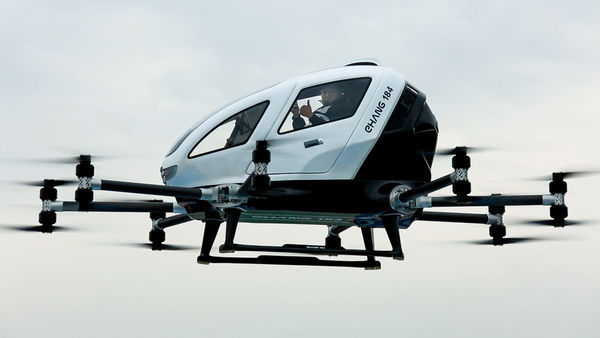
Watch Ehang's drone carrying passengers in new flight video
"It was way back at CES 2016 when Ehang showed off a prototype of its passenger drone, the Ehang 184. There was an air of skepticism over its claims of autonomous flying, but the company has just released the first footage of the vehicle in flight with passengers on board. Ehang claims it has carried out more than 1000 test flight over the years. In the video, the company said Ehang CEO Huazhi Hu and Wang Dong, the deputy mayor of Guangzhou, China, where the tests took place, are two of the 40 passengers to have taken to the skies in the craft. The all-electric drone can carry passengers 10 miles or for up to 23 minutes of flight. The company says all someone has to do is input the destination and the aircraft will take them there—flying autonomously—and land." [...]

NASA Tests Atomic Clock for Deep Space Navigation
"In deep space, accurate timekeeping is vital to navigation, but many spacecraft lack precise timepieces on board. For 20 years, NASA's Jet Propulsion Laboratory in Pasadena, California, has been perfecting a clock. It's not a wristwatch; not something you could buy at a store. It's the Deep Space Atomic Clock (DSAC), an instrument perfect for deep space exploration. Currently, most missions rely on ground-based antennas paired with atomic clocks for navigation. Ground antennas send narrowly focused signals to spacecraft, which, in turn, return the signal." [...]

Announcing "Project Things" - An open framework for connecting your devices to the web
"Last year, we said that Mozilla is working to create a framework of software and services that can bridge the communication gap between connected devices. Today, we are pleased to announce that anyone can now build their own Things Gateway to control their connected device directly from the web. We kicked off “Project Things”, with the goal of building a decentralized ‘Internet of Things’ that is focused on security, privacy, and interoperability. Since our announcement last year, we have continued to engage in open and collaborative development with a community of makers, testers, contributors, and end-users, to build the foundation for this future. Today’s launch makes it easy for anyone with a Raspberry Pi to build their own Things Gateway. In addition to web-based commands and controls, a new experimental feature shows off the power and ease of using voice-based commands." [...]
Outras Notícias
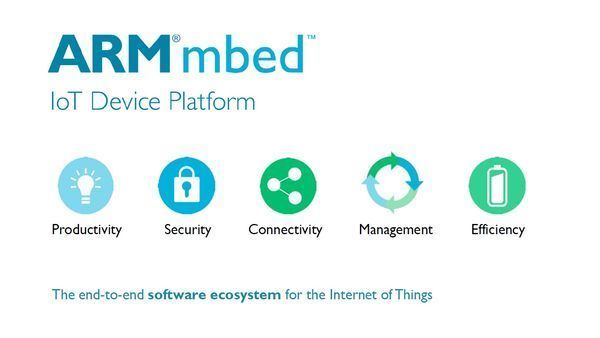
Mbed OS 5.7.4 released
"We are pleased to announce the Mbed OS 5.7.4 release is now available. This is the latest patch release based on the feature set that Mbed OS 5.7 introduces. Summary This patch release includes new target support for the MTS Dragonfly, EMW3166 and VBLUno51 targets. We have improved the stability of our embedded file system. We added two new exporters, which allow users to use CMake with CLion and GCC with NetBeans. We have made several USB improvements to NXP targets." [...]
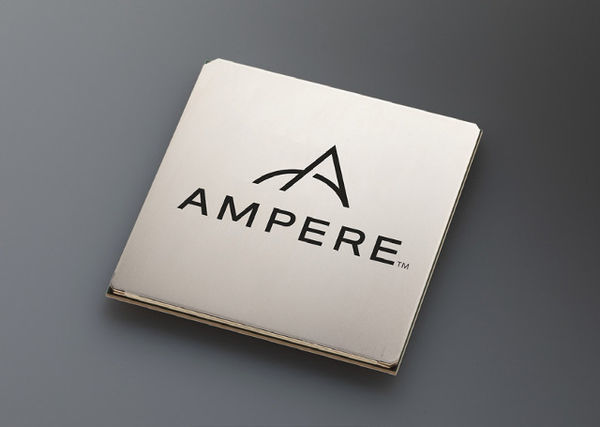
Ampere SoC Designed for Cloud Computing Comes with 32 ARMv8 Cores @ 3.3 GHz, Supports up to 1TB RAM
"Ampere is a brand new company that has just launched to “address memory performance, cost, space and power constraints for emerging hyperscale cloud applications and next-generation data centers”, and whose founders include Renee James (CEO), former president of Intel, among other “semiconductor and cloud computing experts”. Their upcoming 64-bit Arm server processors aim to achieve those goals via thirty two custom Armv8-A cores operating at up to 3.3 GHz, support for up to 1TB of RAM, and a 125 Watts power envelop, or around 4 Watts per core. " [...]
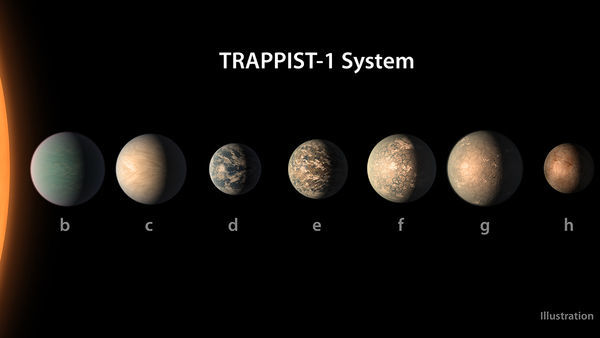
New Clues to Compositions of TRAPPIST-1 Planets
"The seven Earth-size planets of TRAPPIST-1 are all mostly made of rock, with some having the potential to hold more water than Earth, according to a new study published in the journal Astronomy and Astrophysics. The planets' densities, now known much more precisely than before, suggest that some planets could have up to 5 percent of their mass in water -- which is 250 times more than the oceans on Earth. The form that water would take on TRAPPIST-1 planets would depend on the amount of heat they receive from their star, which is a mere 9 percent as massive as our Sun. Planets closest to the star are more likely to host water in the form of atmospheric vapor, while those farther away may have water frozen on their surfaces as ice. TRAPPIST-1e is the rockiest planet of them all, but still is believed to have the potential to host some liquid water. "We now know more about TRAPPIST-1 than any other planetary system apart from our own," said Sean Carey, manager of the Spitzer Science Center at Caltech/IPAC in Pasadena, California, and co-author of the new study." [...]

Intel Xeon D-2100 Processor Extends Intelligence to Edge, Enabling New Capabilities for Cloud, Network and Service Providers
"Intel today introduced the new Intel® Xeon® D-2100 processor, a system-on-chip (SoC) processor architected to address the needs of edge applications and other data center or network applications constrained by space and power. The Intel Xeon D-2100 processor extends the record-breaking performance and innovation of the Intel Xeon Scalable platform from the heart of the data center to the network edge and web tier, where network operators and cloud service providers face the need to continuously grow performance and capacity without increasing power consumption. “To seize 5G and new cloud and network opportunities, service providers need to optimize their data center and edge infrastructures to meet the growing demands of bandwidth-hungry end users and their smart and connected devices,” said Sandra Rivera, senior vice president and general manager of the Network Platforms Group at Intel. “The Intel Xeon D-2100 processor allows service providers and enterprises to deliver the maximum amount of compute intelligence at the edge or web tier while expending the least power.” Intel Xeon D-2100 processors will enable greater performance and hardware-enhanced security to the network edge in support of the growing number of workloads that demand more compute, analytics and data protection closer to endpoint devices. For example, the new processors will help communications service providers CoSPs offer multi-access edge computing (MEC), which allows software applications to tap into local content and real-time information about local-access network conditions, reducing mobile core network of network congestion. This can enable uses cases ranging from 5G-connected cars, smart stadiums, and retail and medical solutions." [...]
Ciência e Tecnologia
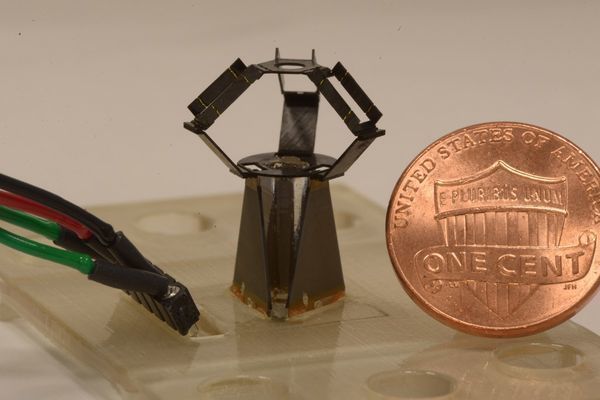
Origami-inspired robot combines precision with speed
"Because of their high precision and speed, Delta robots are deployed in many industrial processes, including pick-and-place assemblies, machining, welding, and food packaging. Starting with the first version Reymond Clavel developed for a chocolate factory to quickly place chocolate pralines in their packages, Delta robots use three individually controlled and lightweight arms that guide a platform to move fast and accurately in three directions. The platform is either used as a stage, similar to the ones used in flight simulators, or coupled to a manipulating device that can, for example, grasp, move, and release objects in prescribed patterns. Over time, roboticists have designed smaller and smaller Delta robots for tasks in limited workspaces, yet shrinking them further to the millimeter scale with conventional manufacturing techniques and components has proven fruitless. Reported in Science Robotics, a new design, the milliDelta robot, developed by Robert Wood’s team at Harvard’s Wyss Institute for Biologically Inspired Engineering and John A. Paulson School of Engineering and Applied Sciences (SEAS), overcomes this miniaturization challenge. By integrating their microfabrication technique with high-performance composite materials that can incorporate flexural joints and bending actuators, the milliDelta can operate with high speed, force, and micrometer precision, which together make it compatible with a range of micromanipulation tasks in manufacturing and medicine." [...]
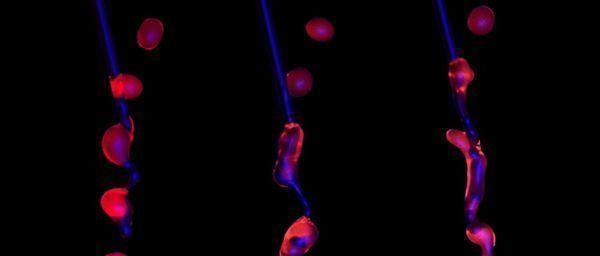
3D printing of living cells new UT technique is fast and flexible
"Using a new technique they call ‘in-air microfluidics’, University of Twente scientists succeed in printing 3D structures with living cells. This special technique enable the fast and ‘on-the-fly’ production of micro building blocks that are viable and can be used for repairing damaged tissue, for example. The work is presented in ‘Science Advances’. Microfluidics is all about manipulating tiny drops of fluid with sizes between a micrometer and a millimeter. Most often, chips with tiny fluidic channels, reactors and other components are used for this: lab-on-a-chip systems. Although these chips offer a broad range of possibilities, in producing emulsions for example - droplets carrying another substance – the speed at which droplets leave the chip is typically in the microliter per minute range." [...]
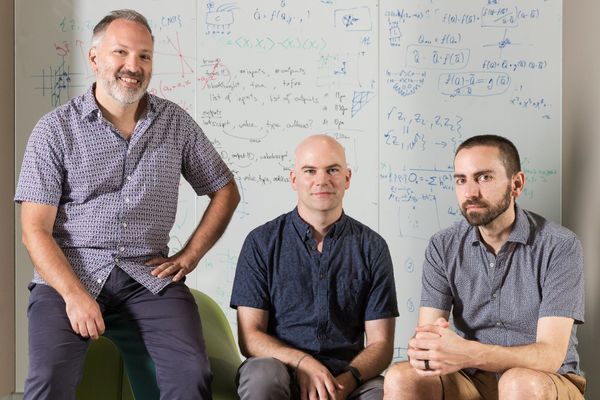
Quantum 'hack' to unleash computing power
"Modifying surface codes can improve error correction 400 percent The instability of qubits - the building blocks of quantum computers - means they are susceptible to error. Our physicists have found that tweaking error coding can open the door to huge efficiency gains. Physicists at the University of Sydney have found a 'quantum hack' that should allow for enormous efficiency gains in quantum computing technologies. As scientists at IBM, Google, Microsoft and universities across the world seek to scale-up quantum technology to make a practical quantum computer, finding ways to do computations within an acceptable error threshold is a big technological problem. The building blocks of quantum machines – quantum bits, or qubits – are prone to interference from their surrounding environments, leading them to decohere and lose their quantum properties. Allowing for this through error correction is vital to the successful scale-up of quantum technologies." [...]
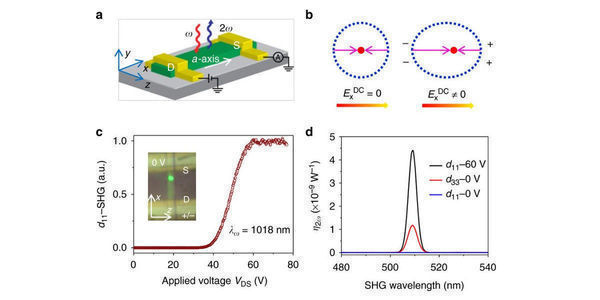
Penn Engineering Research Gives Optical Switches the 'Contrast' of Electronic Transistors
"Current computer systems represent bits of information — the 1’s and 0’s of binary code — with electricity. Circuit elements, such as transistors, operate on these electric signals, producing outputs that are dependent on their inputs. As fast and powerful as computers have become, Ritesh Agarwal, professor in the Department of Materials Science and Engineering in the University of Pennsylvania’s School of Engineering and Applied Science, knows they could be more powerful. The field of photonic computing aims to achieve that goal by using light as the medium. Agarwal’s research on photonic computing has been focused on finding the right combination and physical configuration of materials that can amplify and mix light waves in ways that are analogous to electronic computer components. In a paper published in Nature Communications, he and his colleagues have taken an important step: precisely controlling the mixing of optical signals via tailored electric fields, and obtaining outputs with a near perfect contrast and extremely large on/off ratios." [...]
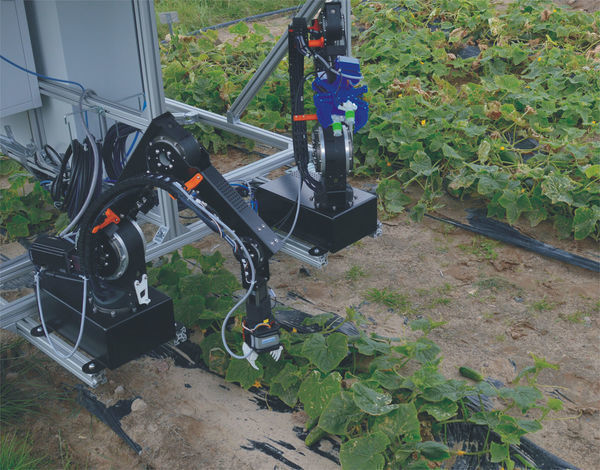
Lightweight robots harvest cucumbers
"Automation-intensive sectors such as the automotive industry are not the only ones to rely on robots. In more and more agricultural settings, automation systems are superseding strenuous manual labor. As part of the EU’s CATCH project, the Fraunhofer Institute for Production Systems and Design Technology IPK is developing and testing a dual-arm robot for the automated harvesting of cucumbers. This lightweight solution has the potential to keep crop cultivation commercially viable in Germany. In Germany, cucumbers destined for pickle jars are harvested by hand with the aid of “cucumber flyers” – farm vehicles with wing-like attachments. Seasonal workers lie on their stomachs on the vehicle’s wings and pluck the ripe cucumbers." [...]

A small-scale demonstration shows how quantum computing could revolutionize data analysis
"Chinese researchers use a powerful new technique to describe mathematical features of a network. Over the past few decades, topology—a branch of mathematics dealing with shapes that can be turned into other shapes by processes like bending and stretching—has evolved from an arcane pursuit into an increasingly powerful tool for analyzing the real world. The role of symmetry in the topological world has turned out to be particularly important. A symmetry is any property that stays the same as the viewpoint changes. A square looks the same as it rotates through 90 degrees, for example. That form of invariance is called rotational symmetry." [...]
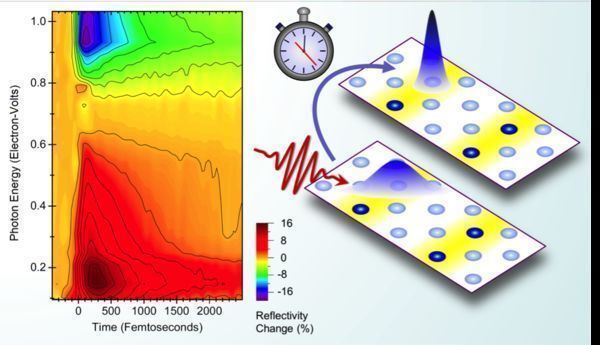
Superconductors earn their stripes
"New Terahertz techniques help to detect striped superconductivity above the superconducting transition temperature in cuprates. Understanding high temperature superconductivity (high Tc) has been a long-standing challenge since its discovery in copper oxide compounds in 1986. A key issue in addressing this problem has involved the study of phases found near superconductivity, typically at temperatures in excess of Tc or at doping levels lower than those needed to achieve this state. Now a team led by scientists from the Max Planck Institute for Structure and Dynamics (MPSD) in Hamburg has provided the first evidence of a hidden superconducting state above the superconducting transition temperature. Such a state has been elusive to detect since it is invisible to most experimental probes. The team’s findings are published in Science." [...]
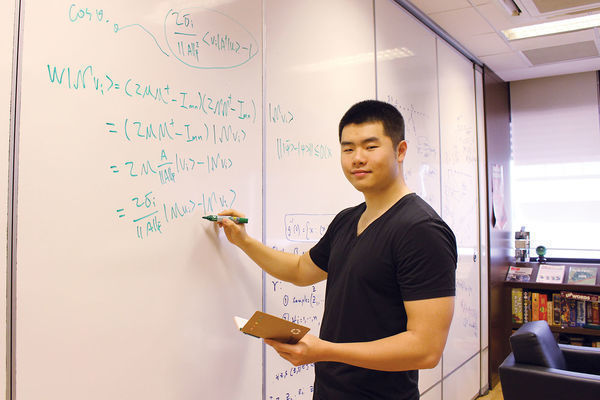
Quantum algorithm could help AI think faster
"One of the ways that computers ‘think’ is by analysing relationships within large sets of data. CQT's Jansen (Zhikuan) Zhao, Anupam Prakash and their collaborator have shown that quantum computers can do one such analysis faster than classical computers, for a wider array of data types than was previously expected. The team’s proposed ‘quantum linear system algorithm’ is published in the 2 February issue of Physical Review Letters. In the future, it could help crunch numbers on problems as varied as commodities pricing, social networks and chemical structures. “The previous quantum algorithm of this kind applied to a very specific type of problem. We need an upgrade if we want to achieve a quantum speed up for other data,” says Jansen, who is corresponding author on the work." [...]
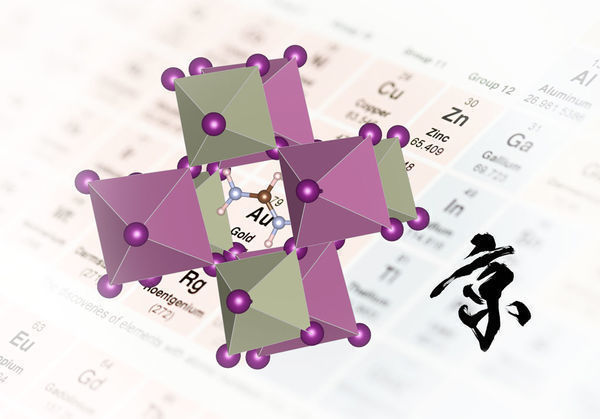
Supercomputer predicts good solar cell materials
"RIKEN’s K computer simulated more than 11,000 compounds to find promising materials for a new type of solar cell Using one of the world’s most powerful supercomputers, RIKEN researchers have identified a material that could boost the commercial prospects of a new type of solar cell1. Perovskite materials can harvest light to produce electricity in solar cells. Since 2009, the efficiency of perovskite cells has soared from less than 4 per cent to more than 22 per cent. The most successful perovskite compounds are composed of a metal (usually lead), halogens such as iodine, and positively charged ions such as methylammonium (Fig. 1). Lead halide perovskites are cheap and easy to manufacture, but they face significant challenges." [...]
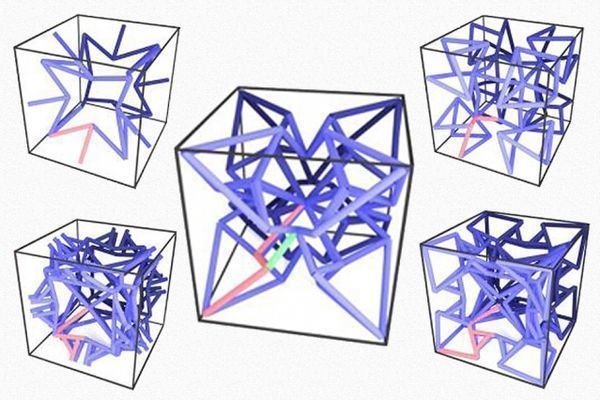
Automating materials design
"For decades, materials scientists have taken inspiration from the natural world. They’ll identify a biological material that has some desirable trait — such as the toughness of bones or conch shells — and reverse-engineer it. Then, once they’ve determined the material’s “microstructure,” they’ll try to approximate it in human-made materials. Researchers at MIT’s Computer Science and Artificial Intelligence Laboratory have developed a new system that puts the design of microstructures on a much more secure empirical footing. With their system, designers numerically specify the properties they want their materials to have, and the system generates a microstructure that matches the specification. The researchers have reported their results in Science Advances." [...]
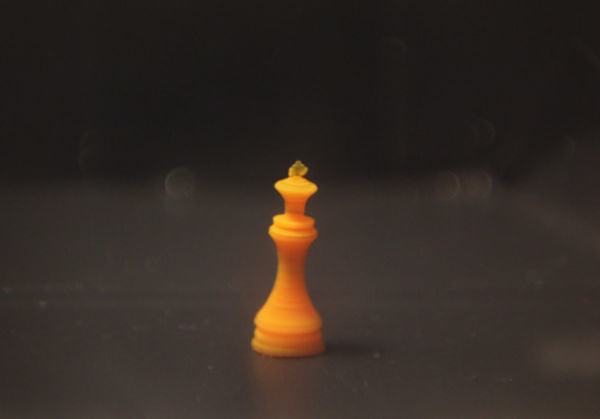
Rutgers Engineers 3D Print Shape-Shifting Smart Gel
"Rutgers engineers have invented a “4D printing” method for a smart gel that could lead to the development of “living” structures in human organs and tissues, soft robots and targeted drug delivery. The 4D printing approach here involves printing a 3D object with a hydrogel (water-containing gel) that changes shape over time when temperatures change, said Howon Lee, senior author of a new study and assistant professor in the Department of Mechanical and Aerospace Engineering at Rutgers University–New Brunswick. The study, published online today in Scientific Reports, demonstrates fast, scalable, high-resolution 3D printing of hydrogels, which remain solid and retain their shape despite containing water. Hydrogels are everywhere in our lives, including in Jell-O, contact lenses, diapers and the human body. The smart gel could provide structural rigidity in organs such as the lungs, and can contain small molecules like water or drugs to be transported in the body and released. It could also create a new area of soft robotics, and enable new applications in flexible sensors and actuators, biomedical devices and platforms or scaffolds for cells to grow, Lee said." [...]

Low-latency image data compression
"The number of cameras in cars is increasing. However, through the flood of data the internal networks are being pushed to their limits. Special compression methods reduce the amount of video data, but exhibit a high degree of latency for coding. Fraunhofer researchers have adapted video compression in such a way that a latency is almost no longer perceivable. It is therefore of interest for use in road traffic or for autonomous driving. This technology will be on display at the Embedded World from 27 February until 1 March 2018 in Nuremberg in hall 4 (booth 4-470)." [...]

Trust is good, quantum trickery is better
"In a world in which we use devices that we do not necessarily trust, can there be any privacy? Yes, and that's precisely what device-independent quantum cryptography achieves. New work now shows how this ‘ultimate’ level of communication security could be reached in practise. In quantum cryptography, the laws of quantum mechanics are exploited to send messages with higher security than is possible in conventional cryptographic schemes based on classical physical phenomena. In principle, quantum communication enables absolute security — that is, no adversary can intercept messages or tinker with them. But in practice such unconditional security is not realizable." [...]
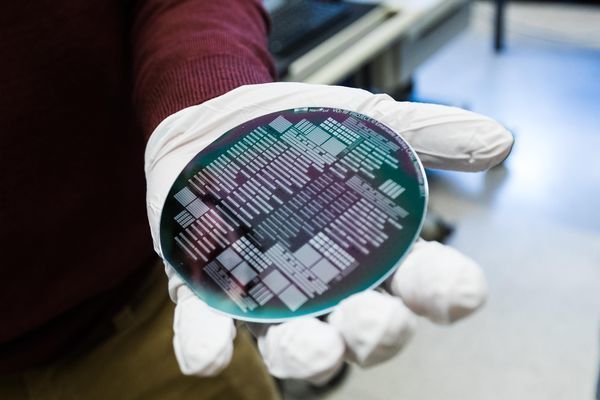
A revolutionary material for aerospace and neuromorphic computing
"Vanadium dioxide’s unique properties make it perfect for outperforming silicon and giving rise to a new generation of low-power electronic devices. Under the Phase Change Switch project (https://phasechange-switch.org/), which is being funded by the EU’s Horizon 2020 research program and coordinated by EPFL researchers, engineers have shown how this compound can be used to create programmable radiofrequency electronic functions for aerospace communication systems. Other applications – such as in neuromorphic computing and artificial intelligence – are also on the cards. First came the switch. Then the transistor. Now another innovation stands to revolutionize the way we control the flow of electrons through a circuit: vanadium dioxide (VO2)." [...]

Breathable, wearable electronics on skin for long-term health monitoring
"A hypoallergenic electronic sensor can be worn on the skin continuously for a week without discomfort, and is so light and thin that users forget they even have it on, says a group of researchers at the University of Tokyo and their collaborators. The elastic electrode constructed of breathable nanoscale meshes holds promise for the development of noninvasive e-skin devices that can monitor a person's health continuously over a long period. Wearable electronics that monitor heart rate and other vital health signals have made headway in recent years, with next-generation gadgets employing lightweight, highly elastic materials attached directly onto the skin for more sensitive, precise measurements. However, although the ultrathin films and rubber sheets used in these devices adhere and conform well to the skin, their lack of breathability is deemed unsafe for long-term use: dermatological tests show the fine, stretchable materials prevent sweating and block airflow around the skin, causing irritation and inflammation, which ultimately could lead to lasting physiological and psychological effects. "We learned that devices that can be worn for a week or longer for continuous monitoring were needed for practical use in medical and sports applications," says Professor Takao Someya at the University of Tokyo's Graduate School of Engineering whose research group had previously developed an on-skin patch that measured oxygen in blood. In the current research, the group developed an electrode constructed from nanoscale meshes containing a water-soluble polymer, polyvinyl alcohol (PVA), and a gold layer—materials considered safe and biologically compatible with the body." [...]
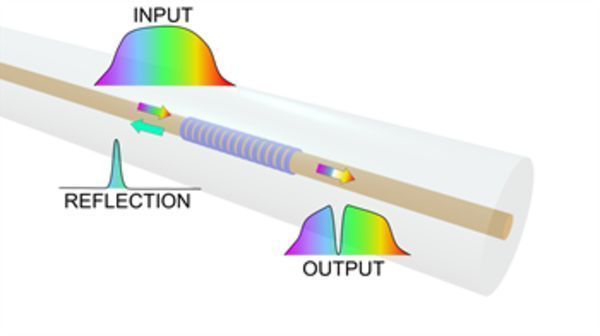
Researchers Create Fiber Optic Sensors that Dissolve in the Body
"For the first time, researchers have fabricated sensing elements known as fiber Bragg gratings inside optical fibers designed to dissolve completely inside the body. The bioresorbable fiber Bragg gratings could be used for in-body monitoring of bone fracture healing and for safer exploration of sensitive organs such as the brain. A fiber Bragg grating is an optical element inscribed in an optical fiber, which is widely used as a sensing instrument. Although fiber Bragg gratings are commonly used for applications such as real-time monitoring of the structural health of bridges or tracking the integrity of airplane wings, until now they didn’t exhibit characteristics preferred for use in the body. With a design that allows them to break down similarly to dissolvable stitches, the new glass fibers should be safe for patients even if they accidently break, according to the researchers. “Our work paves the way toward optical fiber sensors that can be safely inserted into the human body,” said Maria Konstantaki, a member of the research team from the Institute of Electronic Structure and Laser (IESL) of the Foundation of Research and Technology – Hellas (FORTH), Greece, that fabricated and characterized the new gratings." [...]
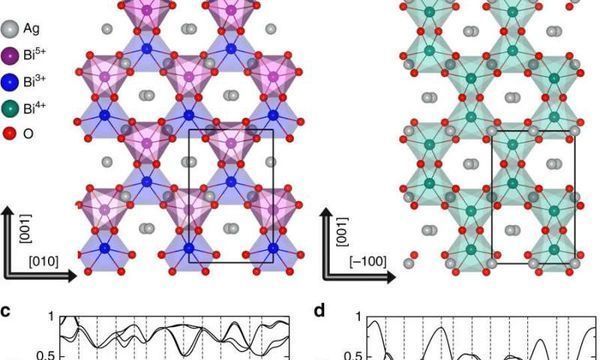
Controlling Quantum Interactions in a Single Material
"The search and manipulation of novel properties emerging from the quantum nature of matter could lead to next-generation electronics and quantum computers. But finding or designing materials that can host such quantum interactions is a difficult task. “Harmonizing multiple quantum mechanical properties, which often do not coexist together, and trying to do it by design is a highly complex challenge,” said Northwestern Engineering’s James Rondinelli. But Rondinelli and an international team of theoretical and computational researchers have done just that. Not only have they demonstrated that multiple quantum interactions can coexist in a single material, the team also discovered how an electric field can be used to control these interactions to tune the material’s properties. This breakthrough could enable ultrafast, low-power electronics and quantum computers that operate incredibly faster than current models in the areas of data acquisition, processing, and exchange." [...]

Revealing the hidden path of perovskite formation
"Perovskite solar cells are an alternative to conventional silicon solar cells, poised to enter the market with their high power-conversion efficiencies (above 22% now) and lower capital expenditure and manufacturing costs. One of the main methods for depositing perovskite films onto panel structures is a process known as sequential deposition, which was developed in 2013 by Michael Grätzel and coworkers at EPFL. Many studies have attempted to control this process with additives, compositional changes, and temperature effects. However, none of these have provided a complete understanding of the entire sequential deposition reaction. This prevents adequate control over film quality, which determines the performance of the solar cell. A study by Michael Grätzel and Amita Ummadisingu at EPFL now offers the most systematic and full study of the sequential deposition reaction to-date." [...]

Collective disentanglement of entangled polymers
"LMU researchers have disproven the conventional theory used to explain the dynamics of polymer solutions. They show that for biopolymers collective effects facilitate chain mobility, which is reminiscent of the behavior of glass-like materials. What do silk threads, plastics and DNA have in common? They are all made up of polymeric constituents and are representative of what scientists call ‘soft matter’. Unlike hard condensed matter, these materials are intrinsically flexible (‘soft’), but can nevertheless form stable structures under ambient conditions. Hence, soft matter cannot be unequivocally classified as either solid or liquid, because its material properties are very sensitive to environmental parameters." [...]
Beyond silicon: researchers solve a materials mystery key to next-generation electronic devices
"Lennon and McCartney. Abbott and Costello. Peanut butter and jelly. Think of one half of any famous duo, and the other half likely comes to mind. Not only do they complement each other, but together they work better. The same is true in the burgeoning field of oxide electronics materials." [...]
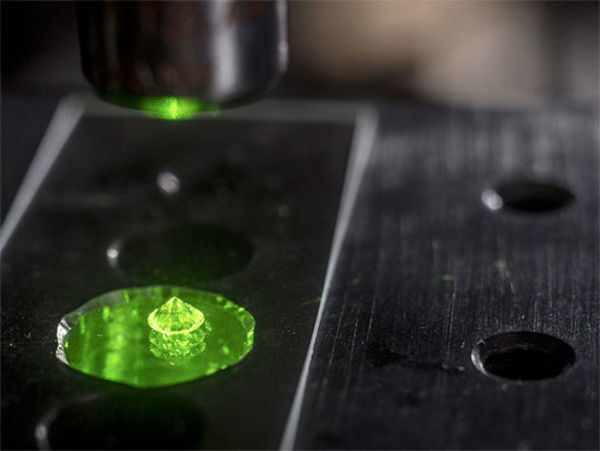
Advances in fabricating nanocrystalline diamonds to study materials under extreme conditions
"Using a nanocrystalline diamond built by plasma vapor deposition, Yogesh Vohra, Ph.D., has already produced a pressure nearly two times greater than that found at the center of the Earth. Now he reports, in a study published in Scientific Reports, that the manufacturing process of these novel, nanocrystalline-diamond micro-anvils has proved to be “remarkably consistent” and demonstrates “a high level of reproducibility in fabrication.”These results are encouraging for continued research to study materials under extreme conditions of pressure and temperature, says Vohra, a professor and university scholar of physics in the UAB College of Arts and Sciences at the University of Alabama at Birmingham. The nanocrystalline diamond looks like a tiny nubbin of material grown on top of the flat culet surface of a one-third-carat gem diamond. To construct the nubbin, the gem diamond is coated with a tungsten thin film that has a 15- to 20-micrometer circle etched out at the center. The nanocrystalline diamond begins to grow as tiny diamond grains in that circle on top of the gem diamond surface. The grains form through vapor deposition from plasma made by heating methane, hydrogen and nitrogen gases." [...]
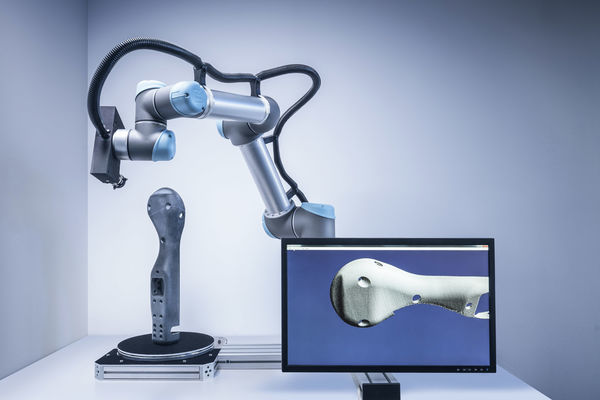
Autonomous 3D scanner supports individual manufacturing processes
"Let’s say the armrest is broken in your vintage car. As things stand, you would need a lot of luck and persistence to find the right spare part. But in the world of Industrie 4.0 and production with batch sizes of one, you can simply scan the armrest and print it out. This is made possible by the first ever 3D scanner capable of working autonomously and in real time. The autonomous scanning system will be on display at the Hannover Messe Preview on February 6 and at the Hannover Messe proper from April 23 to 27, 2018 (Hall 6, Booth A30). Part of the charm of vintage cars is that they stopped making them long ago, so it is special when you do see one out on the roads." [...]
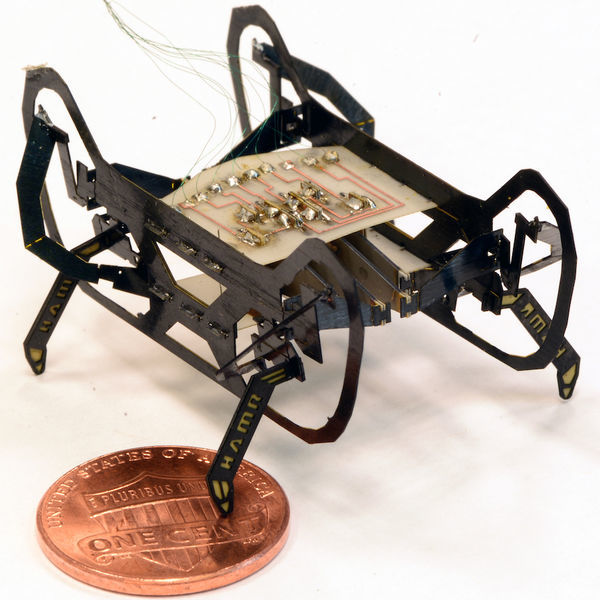
A cockroach-inspired robot
"Harvard’s Ambulatory MicroRobot is speedy, resilient and versatile If you’ve ever tried to kill an interloping cockroach, you’ve probably noticed two things: they’re fast and nearly invincible. While those features make roaches terrifying to most people, it’s a source of bioinspiration for roboticists at the Harvard John A. Paulson School of Engineering and Applied Sciences (SEAS). Led by Robert J. Wood, Charles River Professor of Engineering and Applied Sciences at SEAS, researchers in the Harvard Microrobotics Laboratory have developed a centimeter-scale robot inspired by cockroaches. The Harvard Ambulatory Microrobot — nicknamed HAMR — is a versatile robot that can run at high speeds, jump, climb, turn sharply, carry payloads and fall from great distances without being injured. “The HAMR platform evolved from our exploration of millimeter-scale fabrication and actuation strategies,” said Wood, who is also a Core Faculty Member of the Harvard Wyss Institute for Biologically Inspired Engineering." [...]

Teaching Machines to Learn by Themselves
"Picture yourself trying to build a machine to detect email spam. You might start with simple rules that identify key words such as “drugs,” for instance. Of course, some legitimate emails could contain those key words, so you add rules to take into account these cases. In an adaptive world, advertisers may quickly learn the rules of your system and develop ways to fool your spam detector. Painstakingly identifying patterns and continuously updating your system by hand is a daunting challenge — even more so for tasks such as identifying one human face out of more than 7 billion, or driving a car through chaotic Manhattan traffic. But what if you could set an environment and ground rules for machines to teach themselves and constantly improve their performance as more data rolls in?" [...]

Serious shortcomings in aging tests of new solar cell materials
"Researchers at Aalto University have found that only a fraction of stability tests done on new types of solar cells meet proper requirements. Tests lack common standards and should have been done in real-world conditions and in groups of several cells. Perovskite and dye-sensitized solar cells have been suggested as energy efficient and cost-effective challengers to silicon solar cells currently on the market. So far, the development of challenger cells has focused mainly on studying and improving their efficiency. In order for the cells to become commercially viable, however, the cells need to have a sufficient life-span, not only be efficient. Researchers at Aalto University have analysed 261 ageing tests conducted on perovskite and dye-sensitised solar cells." [...]
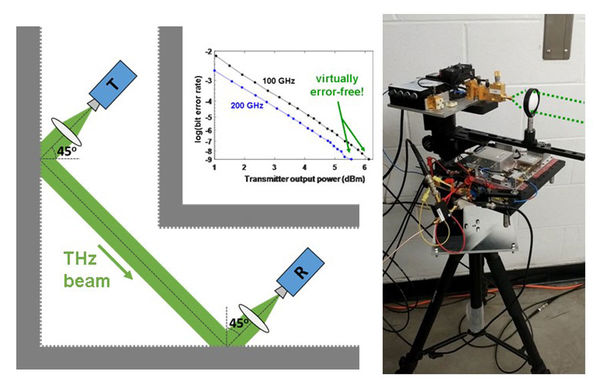
Advances Open New Frequency Range for Wireless Communications
"Data transmission studies in the terahertz region show promise to expand the spectrum available for use. The world is running out of bandwidth to support our growing communication demands. This is in part due to “internet of things” technologies which make everything from your toaster to your front door accessible online, and have driven an explosion in data traffic. A new range of frequencies in the terahertz (THz) region of the spectrum may soon be available for use. A paper appearing this week in APL Photonics, from AIP Publishing, demonstrates the feasibility of using THz carrier waves for data transmission in diverse situations and environments, including non-line-of-sight applications where waves bounce off, or are reflected by, walls and other objects. Daniel Mittleman of Brown University, whose group led the study, said, “We’re not the first group to study the feasibility of THz wireless links, either indoors or outdoors, but there have been few comprehensive studies.” Many researchers in the field have believed that links that rely on indirect, or non-line-of-sight pathways, are impossible." [...]
Documentação
A documentação é parte essencial do processo de aprendizagem e a Internet além de artigos interessantes de explorar também tem alguma documentação em formato PDF interessante de ler. Todos os links aqui apresentados são para conteúdo disponibilizado livremente pelo editor do livro.

Learning with Python - How to Think Like a Computer Scientist
""How to Think Like a Computer Scientist: Learning with Python" is an introduction to computer science using the Python programming language. It covers the basics of computer programming, including variables and values, functions, conditionals and control flow, program development and debugging. Later chapters cover basic algorithms and data structures. " [...]
Projetos Maker
Diversos Projetos interessantes.

Light Painting Robot
"To answer questions on the subject of light painting and the tools I use I have created a beginners guide to light painting here... https://www.instructables.com/id/Light-Painting-a-Beginners-Guide/ Ever wanted to create cool light painting images like this one above (a collaberation between me and Stephen elliott)??? me too however i can never seem to get my orbs to be even and round! (I am of course assuming you know what light painting is if not here's a quick wiki on the subject. https://en.wikipedia.org/wiki/Light_painting and here's a quick google image search on the subject). So I decided to apply some of my technical skill to create a Robot to draw the orbs for me. this is intended to be used along side other light painting tools and my example images are created with the robot as it stands now." [...]
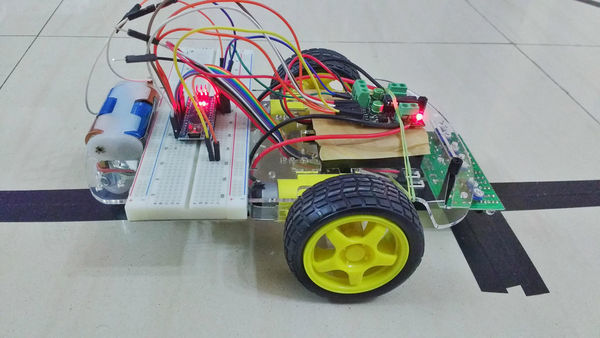
How To Make A Line Follower Using Arduino
"If you are getting started with robotics, one of the first project that beginner make includes a line follower. It is a special toy car with property to run along a line which normally is black in color and in contrast with background. Let's get started. " [...]

Smart Ic Tester
"We all know what IC Testers do... but for those who don't - IC Testers are devices which are used to test Integrated Circuits by sending in Pulses as per their Truth Table. Generally, IC number is fed into IC Tester and a comparison test is made against that particular IC's Logic Table. A smart IC tester is far more capable and better than a generic IC Tester, it has an ability to detect and check the connected IC along with a manual mode. Our IC Tester features a Touch LCD which gives a better user experience and easy to understand UI. IC Testers maybe costly instrumentation devices but this one is just under 1600( ~$25), pretty cheap right ? " [...]
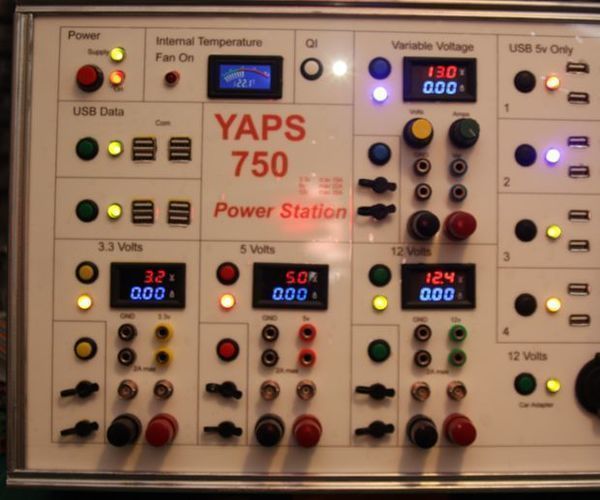
Yaps 750 Power Supply
"I have a small, cheap power supply which gives me variable voltage etc.I rarely work with voltages above 12 volt so it has served me well for a few years.My main issue with it is its limitation to have multiple things connected at once.I have created a small board that takes a 12v supply and breaks that out into 3.3v, 5v and 12v, but even that is limited to one output per voltage range. About three months ago my desktop PC decided that it had had enough and died.It was the motherboard, so I bought a bare bones machine so that I could re-use all my drives, graphics card etc.This new box came with its own power supply, so now I had a perfectly good 750 watt supply from the old box.I have seen many Instructables in the past where people have utilised their old ATX supply into a bench supply, so I thought that I would also give it a go. " [...]

Pan-Tilt Multi Servo Control
"On this tutorial, we will explore how to control multiple servos using Python on a Raspberry Pi. Our goal will be a PAN/TILT mechanism to position a camera (a PiCam). " [...]
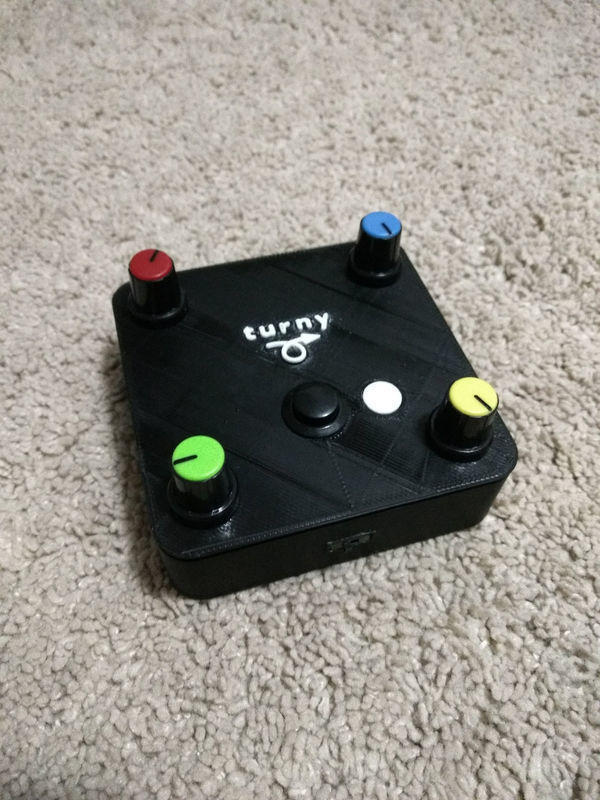
Turny: an alternative bluetooth video game controller
"With Global Game Jam 2018 coming up soon, I had the idea of building an alternative video game controller for which I could design a game for during the jam. I recently got my hands on an Adafruit Bluefruit LE m0 Featherboard, an Arduino-compatible microcontroller with built-in low-energy bluetooth module and I was quite keen to try and find a project to test it out on. I started thinking of types of control mechanisms that you don't really find on modern, conventional game controllers: I didn't really have too much time to try and use something really exotic that I'd have to order in, so I ended up thinking about paddles. Old games controllers dating back to the 1970's commonly used a single paddle, or rotational knob, for example on the Magnavox Odyssey and the Atari 2600. The original arcade version of Pong, one of the first video games used two potentiometer knob controllers for two player controller of in-game "paddles" (hence the origin of the term, in relation to the on-screen object the players control). No modern game controllers seem to use paddles or knobs anymore." [...]
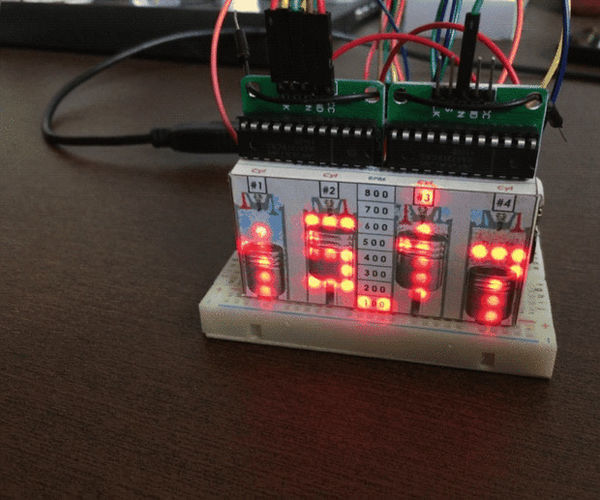
4-Stroke Digital Clock
"The "4-Stroke Digital Clock" driven by Arduino is a fun emulator of an internal combustion engine in a digital Clock. Hours and minutes digits represent the pistons moving and with a precise RPM control (100 to 800). The RPM are shown by two columns in the center of display. Another interesting visual information is the firing sequence "1-3-4-2" of cylinders. Spark starts when the piston is at the top of cylinder in the compression cycle. The code is a good exercise for managing dot matrix pixels and for introducing a simple animation feature." [...]

Low Cost/Voltage 3W Class-D Stereo Audio Amplifier for Portable Gadgets
"This low cost low voltage 3W class-D stereo amplifier is based on PAM8403 IC, The PAM8403 is a 3W, class-D audio amplifier. It offers low THD+N, allowing it to achieve high-quality sound reproduction. The new filter-less architecture allows the device to drive the speaker directly, requiring no low-pass output filters, thus saving system cost and PCB area. With the same numbers of external components, the efficiency of the PAM8403 is much better than that of Class-AB cousins. It can extend the battery life, which makes it well-suited for portable applications. Trimmer Potentiometer helps to adjust the volume control, CN1 provided to feed the audio signal, CN2 power supply, Mute and shutdown in, LS1 and LS2 to connect the speaker." [...]

LED Roulette Circuit Using 555 Timer | Diy | Step By Step
"Hi Today Instructable is very simple and easy to build DIY LED Rouletter CircuitA Complete Step By Step Video Tutorial is also given in the video below. Here, we are going to show you how to make an LED Roulette Circuit using 555 timer IC, before starting the tutorial let you know about what the roulette is, its a casino game named after the French word which means little wheel. As same, here we are making a wheel (or circle) shaped led blinker, using 555 timer IC placed in Astable mode, and IC 4017 which is decade counter IC and small needful components. " [...]

Uv Glow Clock - It Spins!
"I wanted to build an unusual clock, and i had some UV Led's and glow in the dark filament on hand so here we are. The glow disk is printed using glow in the dark (uv) PLA plastic Parts used... Arduino Nano (v3) 10x UV LED's (5mm) 1x 28BYJ-48 Motor (cheap stepper motor) 1x DS1307 RTC clock module Also used was some Black PLA for the base and some M3 nuts and bolts to mount the motor. Download and print the Face, Base & Case (case optional) from thingiverse. " [...]
Social Stats Tracker Display With Esp8266
"Frame your followers! Here's how to build a social media stats tracker display using the a wifi arduino-compatible ESP8266 microcontroller board and several seven-segment displays. This project is an extension of my YouTube Subscriber Counter project, but uses one "brain" to track and display multiple networks. Easily omit the left (large digits) displays for any stat under 10k to bring the cost of components down. Before attempting this project, you should be generally familiar with uploading new programs to your Arduino board and installing code libraries, both of which you can learn for free in my Arduino Class, though you really don't have to understand much of the actual Arduino code to get this project running. For a more in-depth introduction to the ESP8266 board (and its installation and setup), check out my free Internet of Things Class." [...]
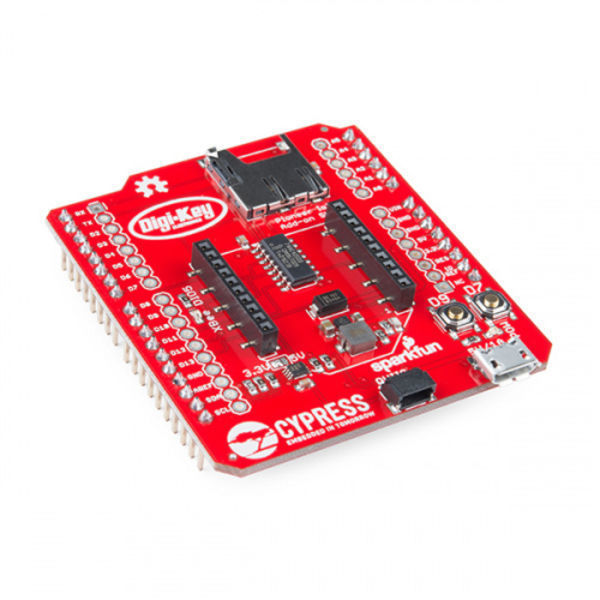
Using the PSoC 6 Pioneer Board with the Pioneer IoT Add-on Shield
"The PSoC 6 is the latest addition to Cypress’s powerful PSoC series of processors. The PSoC 6 Pioneer IoT Add-On Shield is the development tool associated with this processor line, sporting an onboard debugger, Arduino compatible headers, CapSense widgets, and more, all tied to a PSoC 6 processor. The processor is a dual-core device, with a Cortex-M0+ low power processor and a Cortex-M4 high power processor tied together via shared peripherals and memory space. This tutorial will show you how to get up and running with the Pioneer Board, using the Pioneer Add-on Shield to expand the capabilities of the PSoC 6 device. We’ll show you how to communicate with a Raspberry Pi via BLE and WiFi (using an XBee WiFi module), as well as how to communicate between a PSoC 4 BLE Pioneer Board and the PSoC 6 Pioneer Board via BLE. " [...]
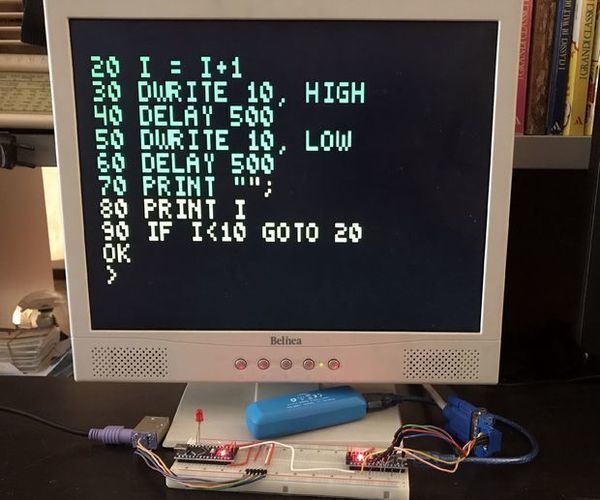
Arduino Basic Pc With VGA Output
"In my previous Instructable I have shown how to build a retro 8-bit computer running BASIC, by means of two Arduino, and with an output signal in B&W for a TV screen. Now I will show how to build the same computer, but with the output signal in color for a VGA monitor! You can input the variables and the BASIC program with a PS2 keyboard, and it generates the output for a VGA monitor with a text resolution of 24 columns x 10 rows of 5x6 pixels characters, in four colors. You can see it in action in the upper video. The program can then be saved on the Arduino EEPROM, and you can still control the I/O pins directly via Basic dedicated commands. This project can also be used to print simple text messages on the monitor, as shown in the third picture in this page." [...]

Make Your Own Spy Bug (Arduino Voice Recorder)
"In this project I will show you how I combined an Arduino Pro Mini with a couple of complementary components in order to create a voice recorder which could also be abused as a spy bug. It has a run time of around 9 hours, is small and super easy to use. The recording quality might not be the best, but it should be suitable for many purposes. Let's get started! " [...]
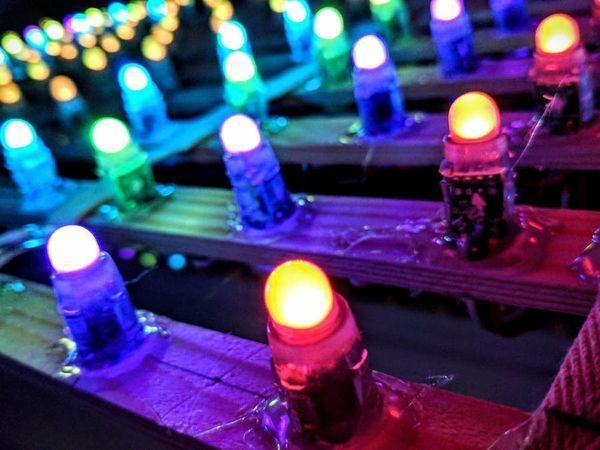
DIY 15*10 dual mode LED matrix
"A home made LED matrix controlled by a Raspberry Pi Zero for animated pictures and disco lights. The beginning I stumbled upon a video made by Andrew Oakley of an inexpensive LED matrix that he'd made using a Raspberry Pi. I thought it was pretty cool and decided I'd like to make something like that myself. I have pretty much followed the essence of his build as described here. So there probably isn't too much point in me going over everything in great detail. The main difference between his project and mine is that I'm using a Raspberry Pi Zero and I've gone for an extra strip of LEDs, making a total of 150 rather than his 96." [...]
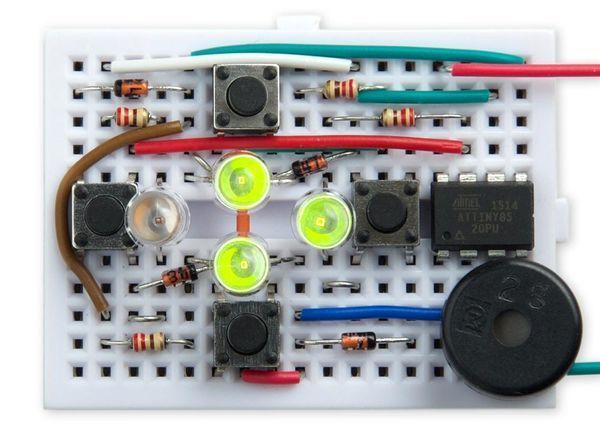
Secret Maze
"This simple game for the ATtiny85 is a maze that you navigate with four pushbuttons. The available paths in each direction are shown by four LEDs. A lit LED means that your way is blocked by a wall, and a speaker beeps if you try to move in that direction. When you get to the goal a tune confirms you've succeeded! The project is a good example of what you can achieve with the diminuitive ATtiny85; as well as mapping the maze it's driving four LEDs, reading four pushbuttons, and playing tones through a speaker! The maze The maze is designed on a 16x16 grid, and is represented in the program as an array of 16-bit numbers, with a '1' bit representing a wall and a '0' bit representing a passageway." [...]

LCD Thermometer with LEDs and Alarm Signal
"An easy project using stuff from the starter kit: Arduino Uno, temperature sensor, 16x2 lcd display, some LEDs and a piezo. This is a fair simple project that you can build using parts from the Starter Kit. The display will show the current temperature in Celsius degrees, and the LEDs will lit each one according to three different temperature ranges. The piezo will play an alarm signal when the temperature goes above 26 degrees. " [...]

DIY - Solar Battery Charger
"Hi Everyone, I am back again with this new tutorial. In this tutorial I am going to show you how to charge a Lithium 18650 Cell using TP4056 chip utilizing the solar energy or simply the SUN. Wouldnt it be really cool if you can charge your mobile phones battery using the sun instead of a USB charger. You can also use this project as a DIY portable power bank. The total cost of this project excluding the battery is just under $5. The battery will addup another $4 to $5 bucks." [...]
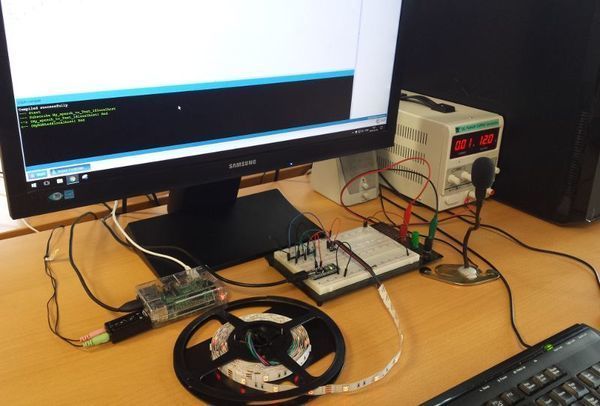
RGB LED Strip controlled by voice
"In this instructables, I will show you how to implement a voice controlled RGB LED strip. After we have built the project, we will be able to control the color of the RGB LED strip and its intensity by voice commands. It sound exciting, is not it? Let's see how it works! " [...]
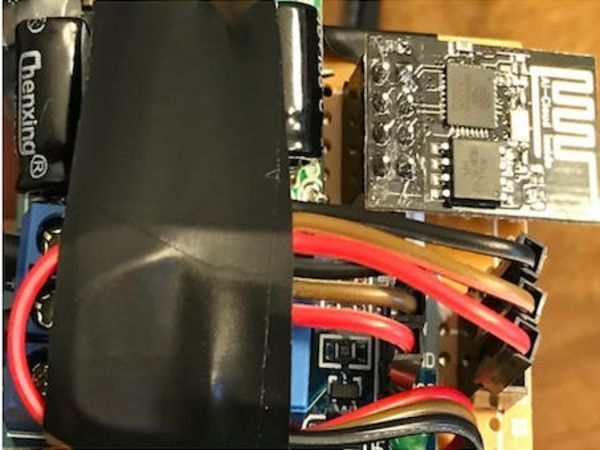
Affordable Alexa Enabled IOT
"Create smart home devices with affordable prices and easy DIY installation to make the smart home dream come true for everybody. Home is a special place, a sanctuary place of rest, comfort and belonging. It’s where families unite and individuals feel comfortable. A smart home adds additional benefits to boost a happy home life. It serves to enhance the home experience and make life more and more comfortable. I have a great passion for IOT, smart home and automation." [...]
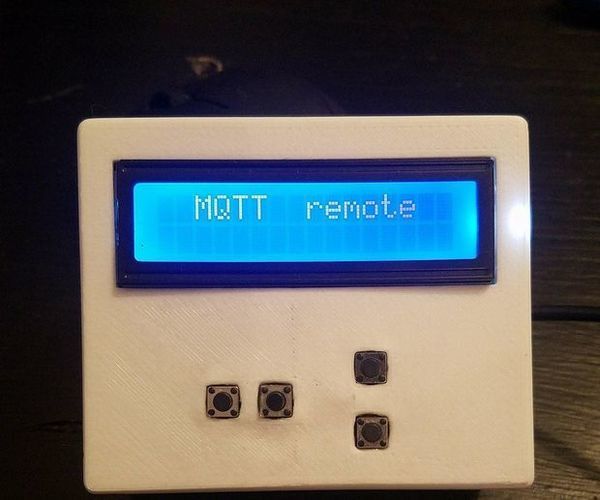
The Universal Mqtt Remote
"Hi everyone, First of all, I'm french, so that's possible that some sentences make no sense, I'm sorry, I'm working hard to improve. I currently work on home automation in my condo. I used OpenHab2 and mosquitto as software. I'm not an expert in these two softwares but I know how they work generally. OpenHab is the user side, with a graphic interface made to control the house. Mosquitto is a software made to make things talk together." [...]

Astable Multivibrator Using 555 Timer | Diy | Step By Step
"Hi Today Instructable is very simple and easy to build ASTABLE Multivibrator CircuitA Complete Step By Step Video Tutorial is also given in the video below. Astable Multivibrator mode of 555 timer IC is also called Free running or self-triggering mode. Unlike Monostable Multivibrator mode it doesnt have any stable state, it has two quasi stable state (HIGH and LOW). No external triggering is required in Astable mode, it automatically interchange its two states on a particular interval, hence generates a rectangular waveform. This time duration of HIGH and LOW output has been determined by the external resistors (R1 and R2) and a capacitor(C1). Astable mode works as a oscillator circuit, in which output oscillate at a particular frequency and generate pulses in rectangular wave form." [...]
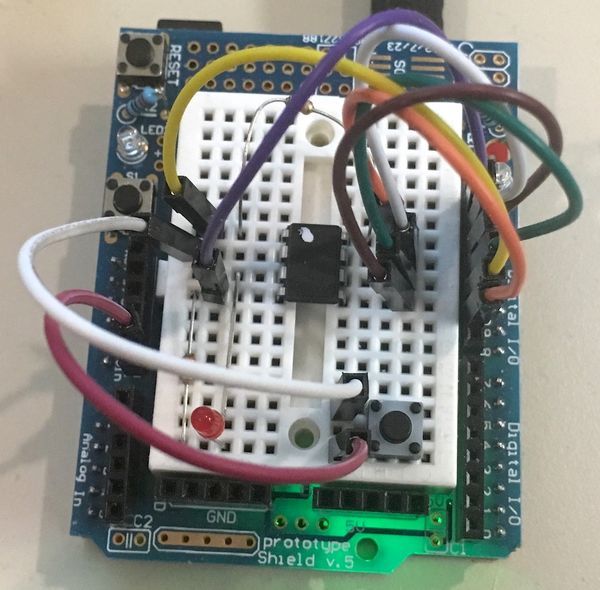
AVR/Arduino Hardware Debugger on the Cheap
"This article describes how you can use an Arduino sketch running on one Arduino to control and debug another Arduino, or an AVR-Series micro-controller such as an ATTiny85. With some limitations, you can use the controlling Arduino to disassemble code, single step code, inspect and modify the current value of registers. I/O ports and SRAM and run code with a hardware breakpoint set. And, all you need to do this is the RESET pin on the target device, a >10K resistor pulling RESET to Vcc, and a standard, ATMega328-based Arduino to act as the controlling debugger. Because using another Arduino as the target device requires some changes to the target Arduino's circuitry, this article is going to show how to use an ATTiny85 as the target device. A future article will go into the changes needed to use an Arduino as the target device." [...]
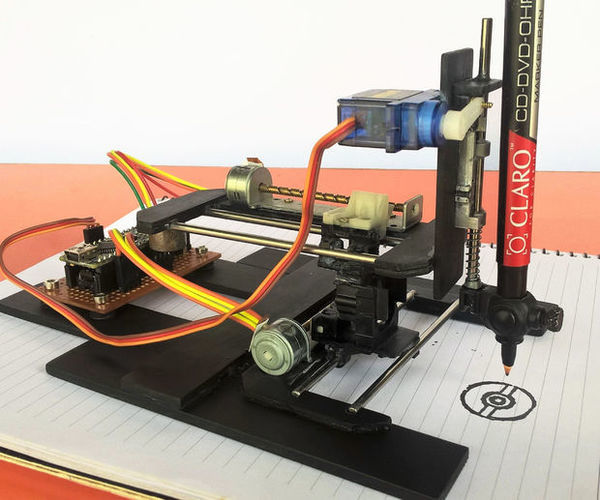
Diy Arduino Cnc Drawing Machine
"Hello Guys, In this instructable I'm going to show you how to make an Arduino CNC plotter from old DVD writers. This is an amazing machine. You can make this machine for your school, college science project. It can write and draw anything. This is also very easy to make. So let's get started." [...]

DIY 240W Bench Power Supply Tutorials 0V To 24V 0 To 10A
"Hi Guy.Today i will show you how to DIY 240W Bench Power Supply Tutorials 0V to 24V 0 to 10A with LCD voltage and current meter. This project attach the youtube video and schematic for you can understand what did i do for make it. Thanks you very much" [...]
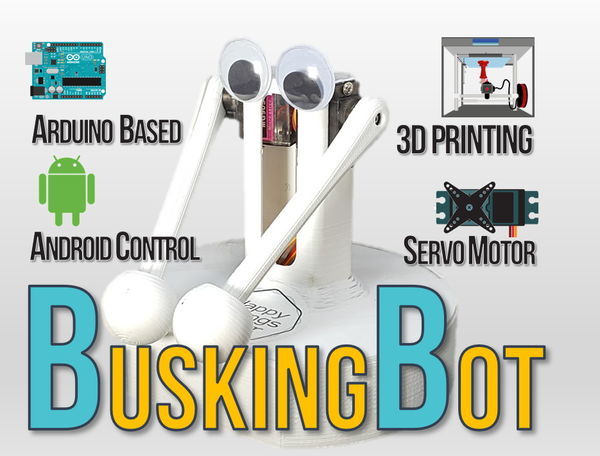
Buskingbot - Arduino Drum Player Robot
"Buskingbot - Arduino Drum Player Robot" [...]

Bass, Treble, And Volume Usb Controller With Keyboard Leds
"I have a Creative SoundBlaster Audigy in my main desktop computer and I needed a way to quickly adjust the bass and treble settings (as well as the volume) when listening to audio or video media. I have adapted the code from two sources given in the code-listing, and also in the links at the end, which makes use of an Arduino Micro by the Arduino organisation, or any other ATmega32u4, as a USB Human Interface Device by using the Nico Hood HID-Project libraries. I also use a wireless keyboard which only shows the state of the Caps-lock, Num-lock and Scroll-lock keys for a short time to increase its battery life. I therefore also included three LED's which show the status of these three keyboard functions. Because the Micro can be easily reprogrammed even after putting it into an enclosure through the USB port, you can adapt the code to suit the characteristics of your own sound device and keyboard by substituting the media identification used in the code with your own selection. There is a vast list of all the functions that you can use available at the Nico Hood HID Github website - examine the file named ConsumerAPI.h for all the other HID functions." [...]
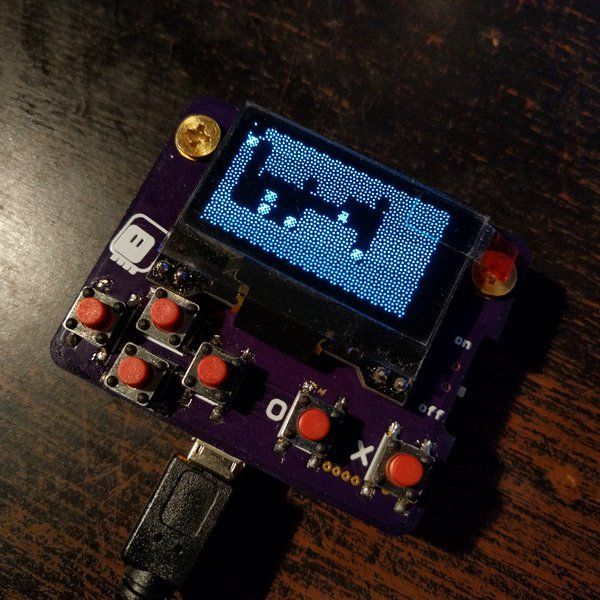
Micro:Boy
"Arcade games on the Micro:bit Arcade games on the Micro:bit The Micro:bit is a pretty decent platform for teaching kids to program, but you can't really make arcade-style games for it. You only have two buttons and a 5x5 display. Perhaps enough for a very small snake game, but that's pretty much it. That's why I started working on #PewPew FeatherWing as an alternative platform, but at some point I started wondering if it's really impossible to do it on the micro:bit. When the most recent version of micropython got the ability to use any pins for I2C, I realized that I can finally connect a display easily. I could use a HT16K33 and a 8x8 LED matrix like on the PewPew, but I decided to try something else — a monochrome OLED display, similar to the one used on many Arduino-based game consoles." [...]
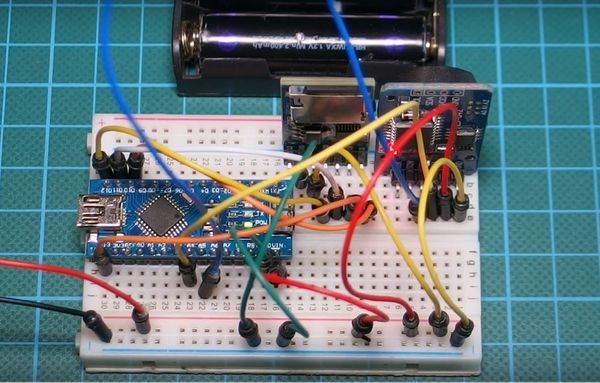
Simple Arduino Data Logger
"A data logger is an electronic device or instrument that records data over a period of time. It allows the user to record time or location stamped data which can be viewed at a later time or real time. Irrespective of the type of data being logged or the kind of data logger, these devices usually contain two main units, the sensor unit and the storage/communication unit. The sensor unit may involve the use of an external instrument or a sensor embedded within the device. Increasingly, but not entirely, data logging devices are becoming more based on micro processors and microcontrollers, which has opened up a whole new level of data gathering and storage. For today’s tutorial, our focus will be on building an Arduino based data logger that reads the temperature of the environment every few minutes and saves the data in a micro sd card." [...]

500mA of Current with a 1% Voltage Output Accuracy: A Low Noise LDO from Maxim Integrated
"Maxim Integrated recently announced their new series of linear regulators that maintain ±1% output accuracy over a wide operating temperature range with only 12µVrms of noise. If you're looking for a physically small LDO that offers low output noise and a ±1% voltage output accuracy (despite significant load, line, and temperature variations), provides configurable output voltage, and comes with many protection features, you should consider Maxim's new MAX38902x series of LDOs. Within this new series are four regulator types to choose from (they all share the same datasheet): - MAX38902A - MAX38902B - MAX38902C - MAX38902D Offered in Small Packages Two of the devices from this series, namely the MAX38902A and MAX38902B, are available in a 2 × 2mm, 8-pin TDFN, or thin DFN, package. The other two devices—the MAX38902C and MAX38902D—come in a much smaller package, specifically a 2 × 3 bump, 1.22 × 0.82mm, 0.4mm pitch wafer-level package (WLP). The figure below shows an overview of these two package types. You can find more detailed information in their app note (Application Note 1891) "Wafer-Level Packaging (WLP) and Its Applications" (PDF)." [...]

Brake Failure Indicator Using 555 Timer | Diy | Step By Step | How To
"Hi Today Instructable is very simple and easy to build Brake Failure Indicator CircuitA Complete Step By Step Video Tutorial is also given in the video below. Automobiles have been the primary mode of transportation for most of us and we depend on them for our day to day commute. Unfortunately there are lots of mishaps that could occur while driving an automobile and Brake Failures are one such case. Of course accidents cannot be avoided sometimes but they can sure be prevented by taking some preventive measures. In this project we will build a Circuit that can be attached to our Vehicles which will monitor the brake of our vehicle and provide us an audio-visual feedback if the brake fails. Most economical vehicles depend on wire braking mechanism to apply brakes on the vehicle." [...]
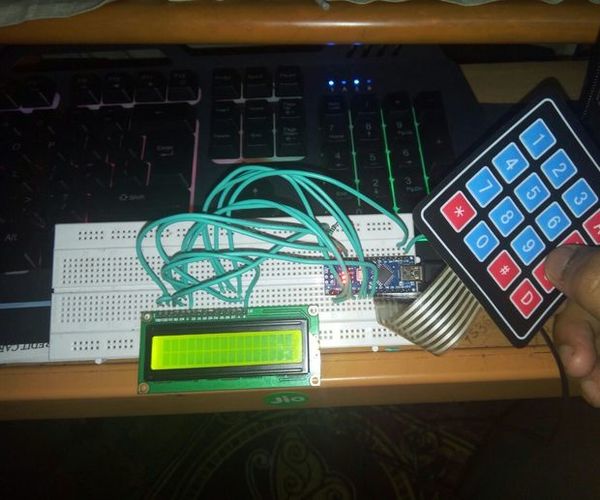
Simpliest Arduino Calculator
"Here is my version of the simpliest arduino calculator ever.Best for begginers as a project for arduino starters.Not only simple this project is much cheap about within 40$s. " [...]
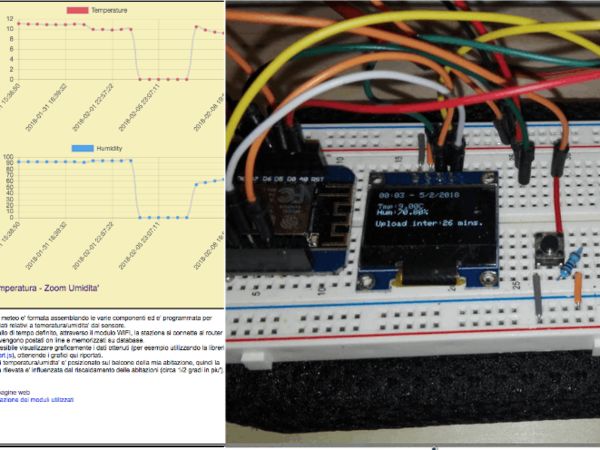
WiFi Weather Stations with online graphs
"WiFi weather station with sending data on line and graphical rendering of them. This little Weather Station is developed assembling necessary components (bought separately) ed it's programmed to gather data related to temperature and humidity from a specific sensor DHT22. 1) Modulo WIFI AZDelivery D1 mini con NodeMCU ESP8266/ESP8266-12E/ESP12 2) Modulo LCD AZDelivery OLED Display 128 x 64 Pixel 0,96 pollice 3) Button A, showing additional information 4) Button B, sending immediately data on line 5) Potentiometer 6) Modulo AZDelivery Real Time Clock RTC DS3231 I2C 7) Power supply Periodically, after a defined interval time, the Weather Station is connecting to home network via WiFi and the data related to Umidity and Temperature are sent online and stored remotely into a MySql database. The OLED Display is showing the values for temperature/humidity and the set interval time to upload data. Also date and time are displayed, get from real time clock RTC. Pressing Button A the display is showing other information (i.e." [...]
That's all Folks!


